S&P 500 Falls, Gold Declines on Rate Concerns, and Currencies See Mixed Movements | Daily Market Analysis
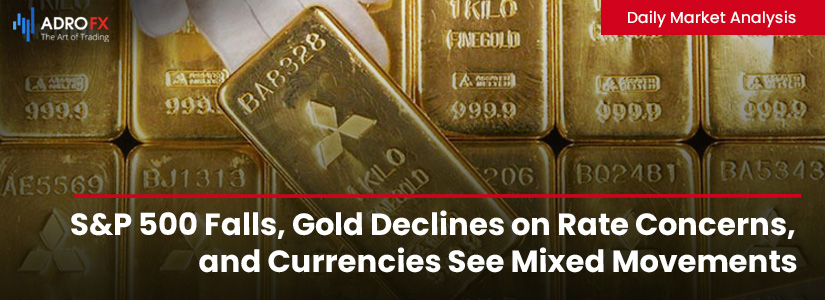
Key events:
- USA - Initial Jobless Claims
- USA - S&P Global US Manufacturing PMI (May)
- USA - S&P Global Services PMI (May)
- USA - New Home Sales (Apr)
The S&P 500 ended Wednesday in the red, falling from its recent record high as investors processed the Federal Reserve's May meeting minutes, which highlighted ongoing inflation concerns.
The Dow Jones Industrial Average dropped by 201 points or 0.5%, the S&P 500 decreased by 0.3%, and the NASDAQ Composite slipped by 0.2%.

Nvidia (NASDAQ: NVDA) saw its shares decline just before its earnings announcement, which was scheduled after the market closed. This decline occurred despite Amazon (NASDAQ: AMZN) refuting a Financial Times report claiming it had stopped chip orders ahead of Nvidia's new chip release.
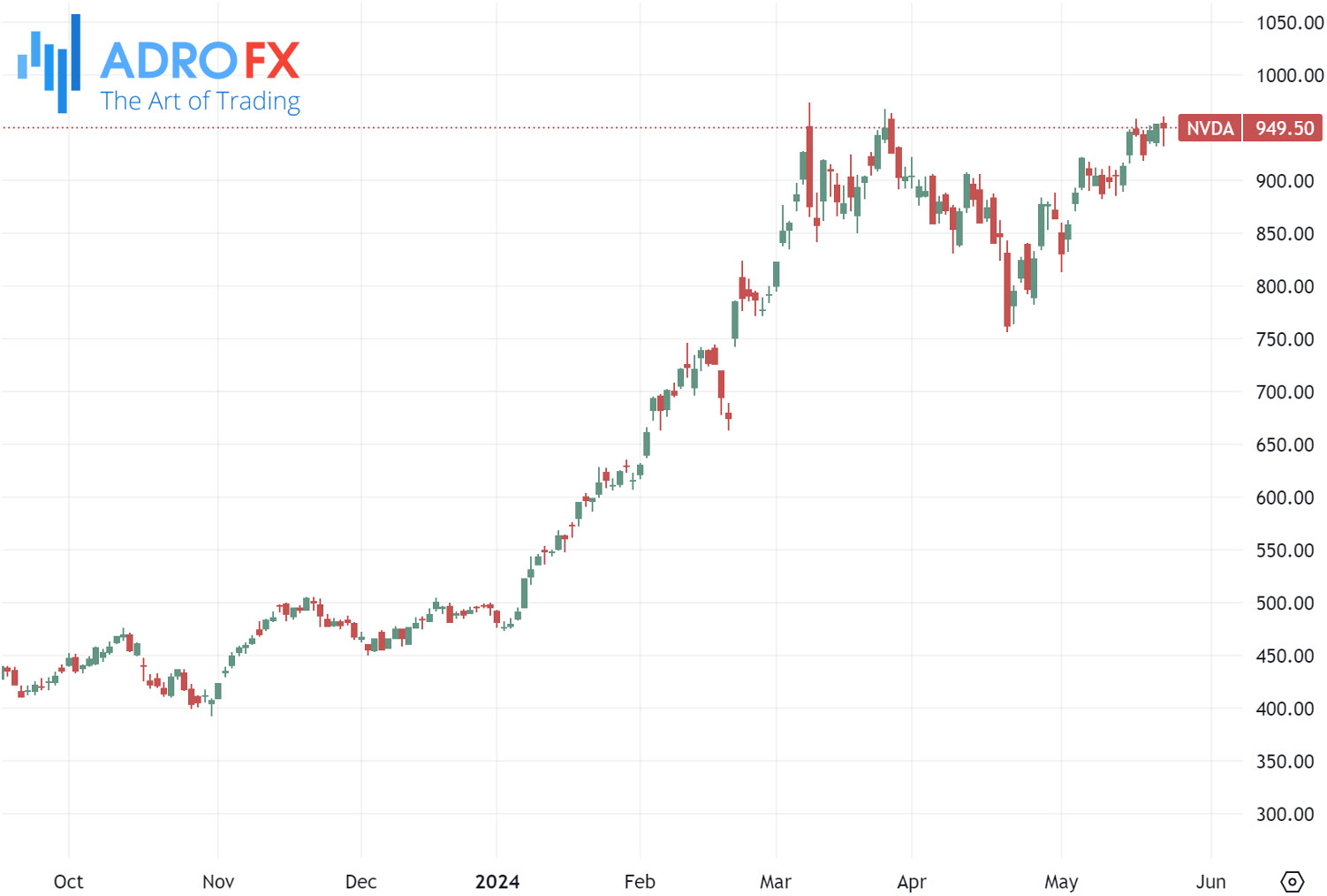
Nvidia is anticipated to report quarterly earnings of $5.58 per share on revenues of $24.53 billion.
Gold prices continued their decline during Asian trading on Thursday, retreating further from recent record highs. This pullback was driven by renewed concerns over persistently high interest rates and diminishing safe-haven demand.
The yellow metal faced pressure from a rebound in the US dollar, which reached a one-week high following the release of the Federal Reserve’s late-April meeting minutes. These minutes revealed that policymakers were increasingly worried about stubborn inflation.

While some policymakers were open to the possibility of further interest rate hikes to combat inflation, such actions seemed unlikely. Nevertheless, the Fed is expected to maintain high interest rates for an extended period due to persistent inflation, as indicated by recent comments from several policymakers. The bank expressed limited confidence in achieving its 2% annual inflation target in the near future.
High interest rates negatively impact gold and other precious metals because they raise the opportunity cost of holding non-yielding assets. This has prevented gold from sustaining its record highs this year.
Additionally, the absence of significant geopolitical escalations in the Middle East, following the death of the Iranian President, further reduced the safe-haven appeal of gold.
The Australian Dollar ended its three-day losing streak on Thursday, likely bolstered by an improved risk appetite. However, the currency faced pressure following the release of the Melbourne Institute's Consumer Inflation Expectation. Expectations for future inflation over the next 12 months fell to 4.1% in May, down from 4.6% in April, marking the lowest level since October 2021.
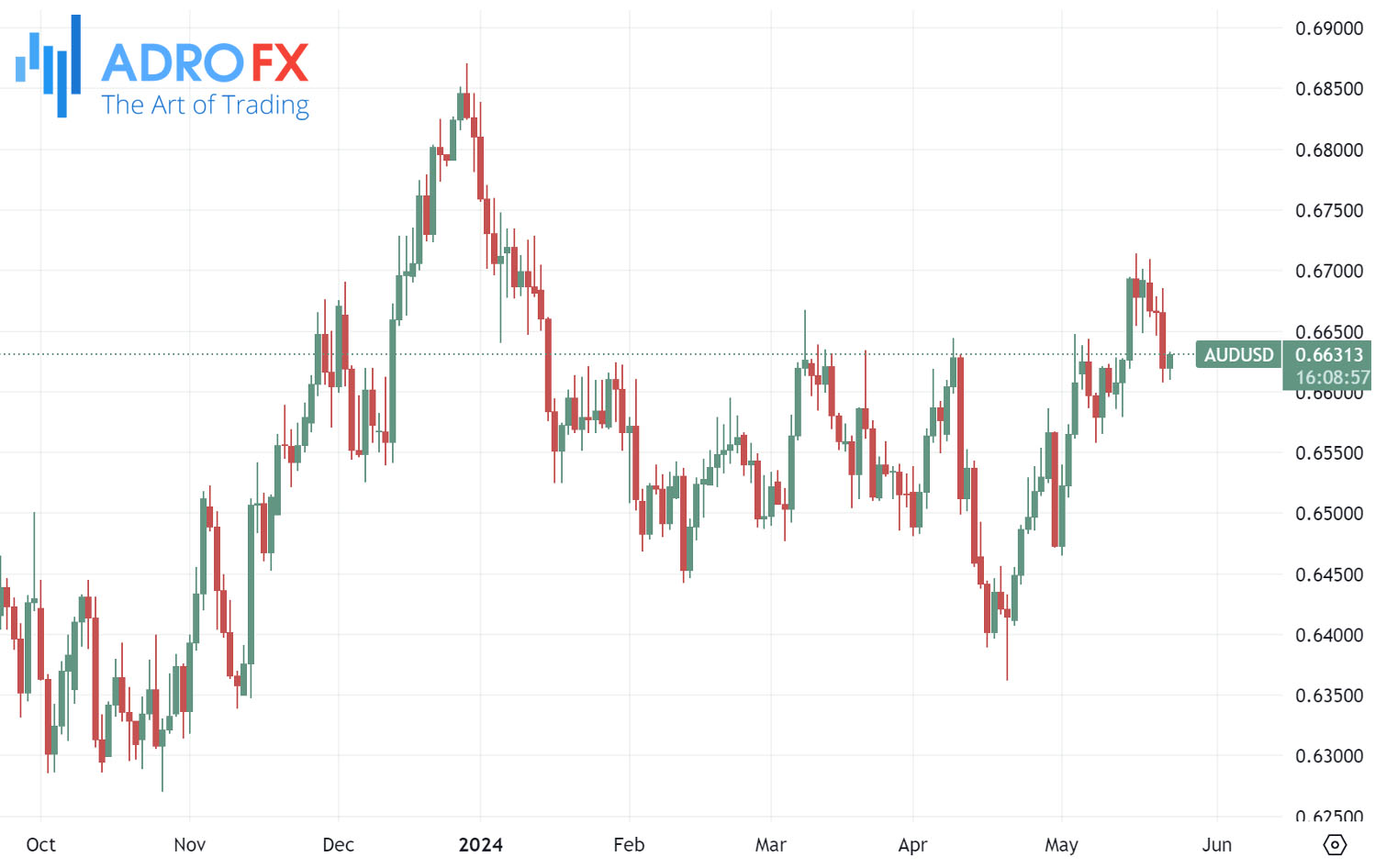
In other economic news, Australian private sector activity remained in expansion mode for the fourth consecutive month in May. The preliminary Judo Bank Composite PMI dipped slightly to 52.6 in May from 53.0 in April, indicating a modest slowdown in growth. This expansion was primarily driven by the services sector, while the decline in manufacturing output slowed.
Meanwhile, the NZD/USD pair gained momentum, trading around 0.6108 during the Asian session on Thursday. The New Zealand Dollar edged higher as the Reserve Bank of New Zealand kept interest rates steady and hinted at a delay in future rate cuts due to persistent inflation pressures.
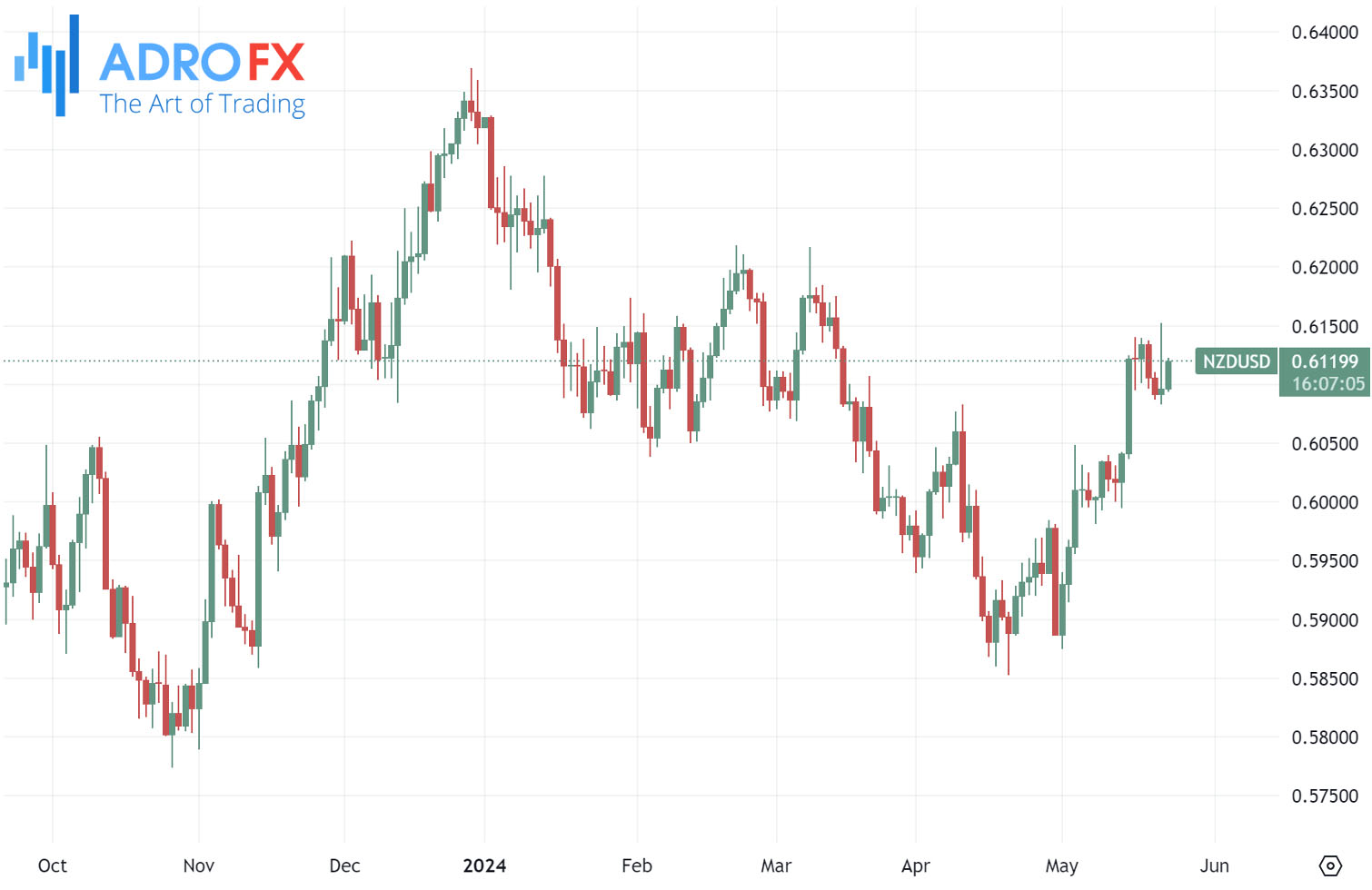
The RBNZ maintained the policy rate at 5.50% for the seventh consecutive meeting in May. The central bank's statement noted that "the welcome decline in inflation partly reflects lower inflation for imported goods and services. However, service inflation is receding slowly, delaying expected policy interest rate cuts." The RBNZ expects inflation to ease within its target range by the end of 2024. This hawkish stance provided support for the Kiwi and generated positive momentum for the NZD/USD pair.
Attention will now shift to the preliminary reading of the US PMI for May. A stronger reading could boost the Greenback and limit the upside potential of the NZD/USD pair in the near term.
The GBP/USD pair extended its rally to around 1.2720 during early Asian trading on Thursday. The pair's rise was supported by hotter-than-expected UK CPI inflation data, which reduced expectations for a Bank of England rate cut in June.
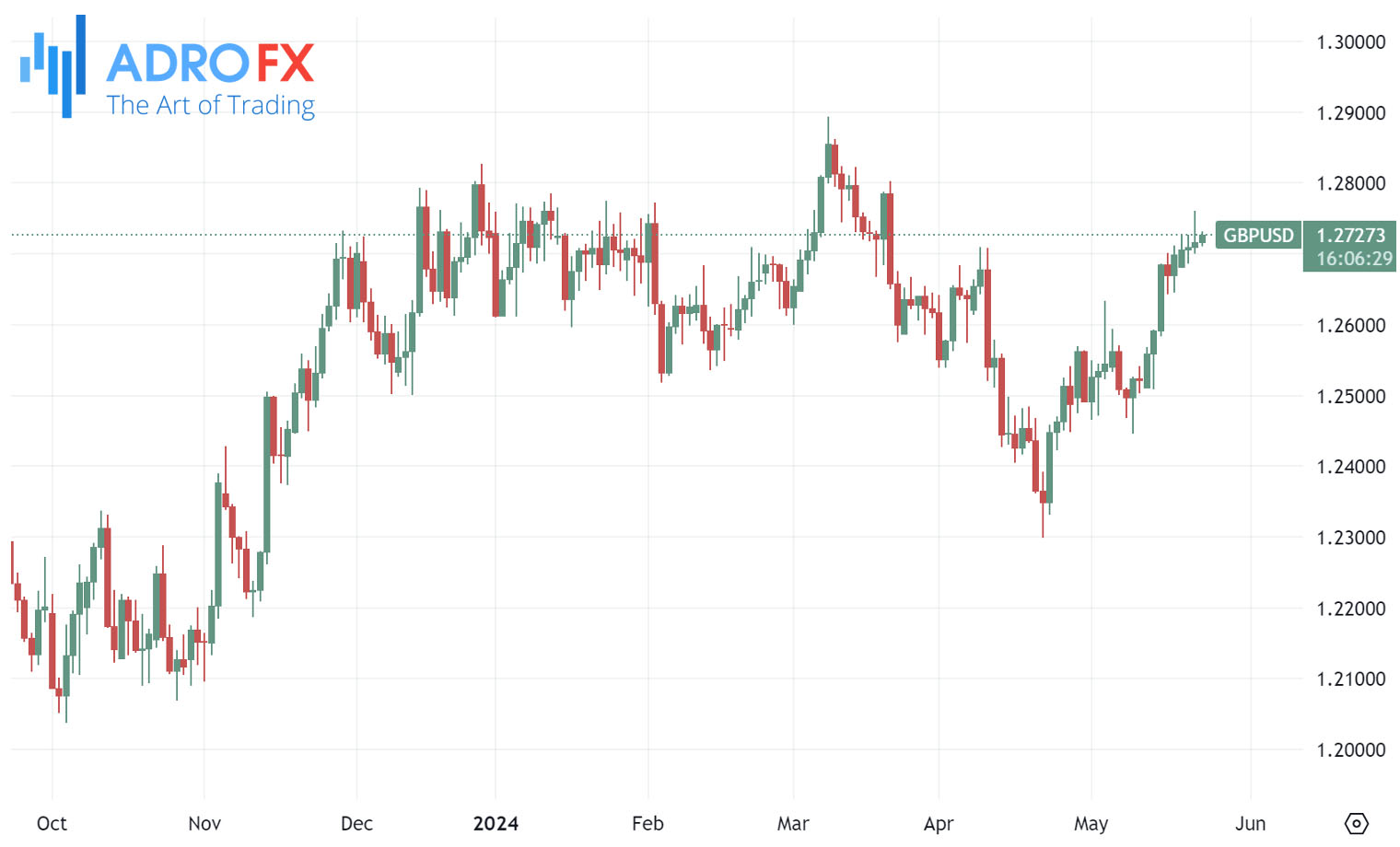
UK inflation cooled less than anticipated in April, prompting investors to lower their bets on a BoE rate cut next month. The CPI rose by 2.3% year-over-year in April, compared to 3.2% in March, marking the lowest level since July 2021, as reported by the Office for National Statistics on Wednesday. The higher-than-expected UK CPI inflation bolstered the Pound Sterling and provided a tailwind for the GBP/USD pair. Market expectations for a BoE rate cut in June dropped to just 18%, down from 50% on Tuesday.








